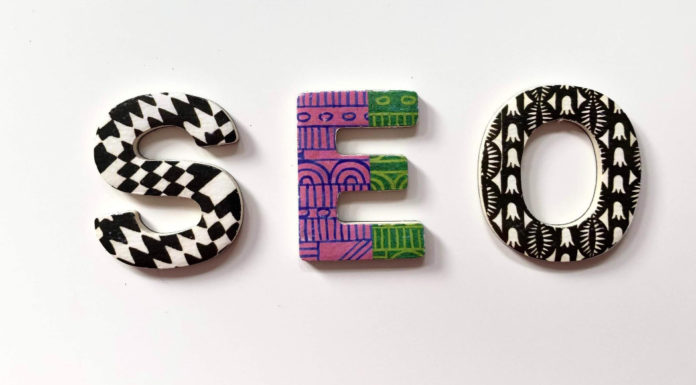Unless you’ve been living under a rock, you’ll have noticed the general trend towards a more customer-centric buying experience. While we don’t all have the resources of a behemoth like Amazon to anticipate and cater to the customer’s every need, we can all do our bit to create a better buying experience. But first, let’s try to identify what that means.
What Is the Buying Experience?
The buying experience is the buyer’s perception of how easy or difficult it would be to buy from you. They don’t necessarily have to go through with the purchase to have a perspective on this — but obviously, the better the experience, the more likely they are to purchase from you.
Why is it important? Well, customers today have certain expectations. They expect service to be quick (customers are not always quick — but they don’t want the hold-up to be on the seller’s end!) They also expect their needs to be anticipated and met and a smooth delivery/onboarding experience. Finally, they want their purchase to deliver on what you promised. They also know that the marketplace is crowded and that if you don’t deliver on these expectations, they can go elsewhere.
These are bare minimum customer expectations. Companies that go above and beyond to provide great service and added value will find they reap the rewards. In fact, research suggests that companies that deliver above-average buying experiences grow twice as fast as companies that provide average experiences.
So, what is involved in going above and beyond? And how can you achieve that, even in small businesses? Here are five pointers.
Simplify the Buying Process
The first step is to look at your process from a buyer’s perspective. Things like the number of clicks on a website, too much text or a hard-to-read font, or the number of points of contact in a sales department can make a buyer feel overwhelmed or just totally put off.
Web designers used to work to the “three click rule” — the idea that the customer should be able to navigate to their endpoint in three clicks or less. That theory doesn’t work for some types of businesses, which end up with very long (or wide) menus that don’t necessarily cater to the customer’s needs. Check your stats to see how many clicks customers are making, the time they’re spending on a page, and where they exit the site to see if this is happening to you.
As well as clarity and readability, web design should focus on user experience (UX) to create logical progressions through the website. If your site has prioritised the three-click rule over genuine UX, it’s time to look at it again.
Likewise, if your sales and product departments are divided so that customers have to talk to multiple contacts to discover the information they need and move forward through the purchase, it’s time to act. Have your product experts train your salespeople so that they can answer the majority of customer questions. Enable your salespeople to sell across your product portfolio without having to hand customers off to other members of staff. Basically, streamline as much as possible to give your customers the most uncomplicated experience without denying them the high level of service they deserve.
Get to Know Your Customers
Understanding your customers’ needs is the best way to make sure those needs are taken care of. But how do you get to know your customers?
There are various ways to do it, and probably the best approach is to try a little bit of everything:
- Research them online — Through their own channels, other news services, social media, etc.
- Attend relevant events — Whether their own events or more general industry events, this enables you to keep an ear to the ground on their industry challenges and opportunities.
- Talk to them — Take them for lunch, give them a call, chat online. However you do it, don’t make it an inquisition. It’s a conversation that’s helping to build a relationship.
- Keep an eye on their competitors — Knowing what they’re up against will help you help them stay ahead of the competition.
This research aims to give you an understanding of what the customer is looking for, as well as identify solutions they don’t even know they need. Could you be the outsider’s perspective they need — and wouldn’t that be really valuable to them?
Learning about their pain points and their passions will also enable you to become a more empathetic salesperson who can speak to their emotional needs — as well as their more obvious business gaps.
Provide Content for Every Stage of the Customer Journey
A lot of content is geared towards introducing the customer to a product or service. The reality is that content should be used throughout the entirety of the buyer’s journey and beyond.
Content empowers buyers in a couple of different ways: First, it gives them information about your offering, which helps them weigh up their options as they’re making a purchase decision. Second, it educates them around the use of your product/service, helping them identify what it could do for their business. Third, it gives them material to share with other decision makers. Once the sale has closed and the deal is done, continued content can help the buyer make the most of their purchase, with useful insights into best practice usage, hacks, case studies, etc.
Most customers want to make their decision at their own pace, without a salesperson breathing down their necks. Content ensures that all the information they need is available to them, even if they decide to traverse most of the buying journey alone.
Anticipate Customer Needs
When you know your customers, it is easier to anticipate their needs. What does this look like in practice? It could be any number of things, depending on your offering. Adding product features, creating specific content types, identifying the best times and ways to communicate with the customer, implementing a payment plan — all these things and more can lead to a better buying experience.
- If you know that your customer is about to take your pitch to their CFO, for example, you could send them an email with selected content that speaks directly to that buying influence.
- Or, if you realise that the customer is hesitating over the purchase because they don’t have the time to manage onboarding, you could offer to take that on as part of the contract.
- Training is a big need when investing in a new product or service, so make sure you make your customers aware of what will be required and offer to help in whatever way you can.
Continue to Provide Great Service after the Sale
This brings us on to the after-sales service, which these days is commonly referred to as customer success. It’s every bit as important as the sale itself since the customer experience doesn’t end when the contract is signed. You want them to go and have a great experience with your product or service, so that they continue to be customers and hopefully even brand advocates!
Again, what you offer in terms of after-sales service will depend entirely on your product — and may also depend on the customer. Some people will want to be left alone for a time, while others may want a lot of support as they get to grips with their new purchase. Some ideas include email newsletters, webinars, training, formal or informal user events, an educational offering, or simply establishing social media communities that enable users to share their experiences and learn from each other.
It’s essential to consider customer success as part of your overall buyer experience strategy so that the full experience is consistent and the relationship you are building with that customer is strong.
Happy Customers Lead to New Customers
The best buyer experiences earn testimonials, great reviews and social media shout-outs, which feed back into your marketing strategy and bring you new customers and business growth. Hopefully, the pointers in this article have given you something to think about as you perfect your business’ buyer experience.




































